We provide Mary Meeker’s Internet Trends Report each year, and it's always popular.
There is an enormous amount of information to absorb, and while Meeker provides a quick-fire 30-minute video as shown below, she admits the material is supposed to be read and not presented.
For a copy of the 333 slides and analysis by Recode, click here. The video link is below.
We have extracted five slides below to give a taste of Meeker's presentation.
1. The subjects covered in the 2019 Report.
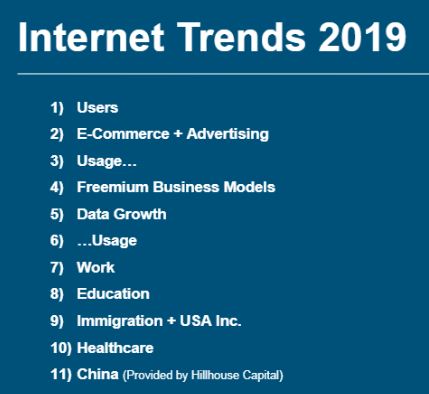
2. About 50% of all people on the planet are now connected to the internet, but growth is slowing.
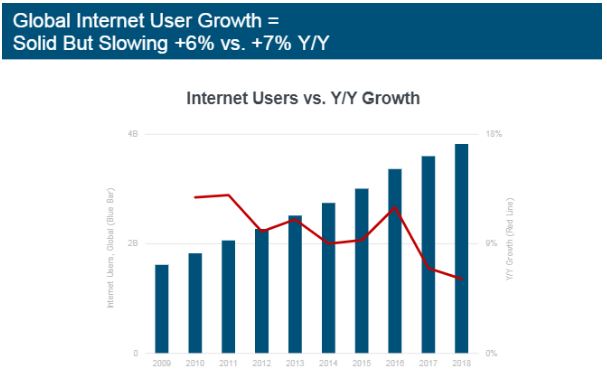
3. The US internet market is saturated but the biggest markets of China and India (especially) have considerable future potential.
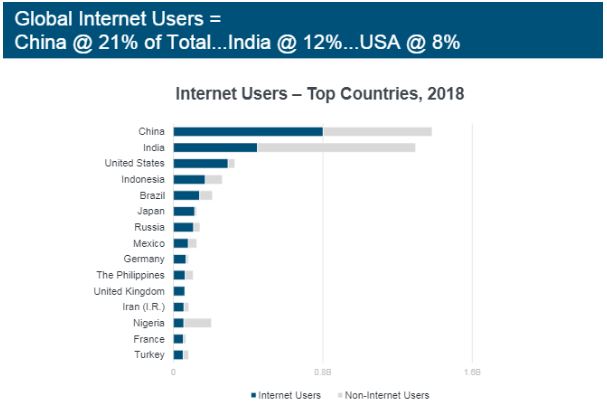
4. We are spending much longer looking at our phones every day, with an unhealthy average of 6.3 hours a day on digital media (US data). Desktops usage is holding steady.
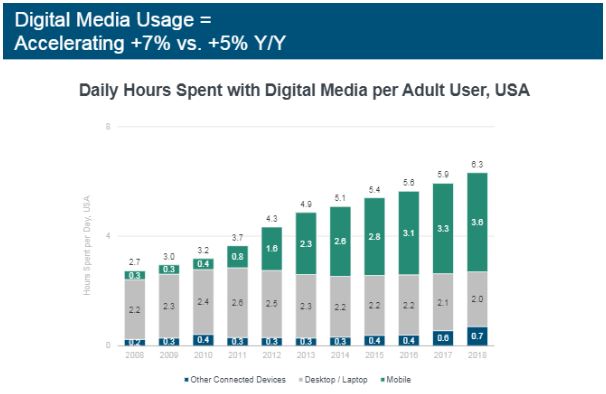
5. Meeker spends many slides discussing the unwelcome side of internet usage, such as health and mental issues, with 26% of adults 'almost constantly' online, and 39% of people aged between 18 and 29.
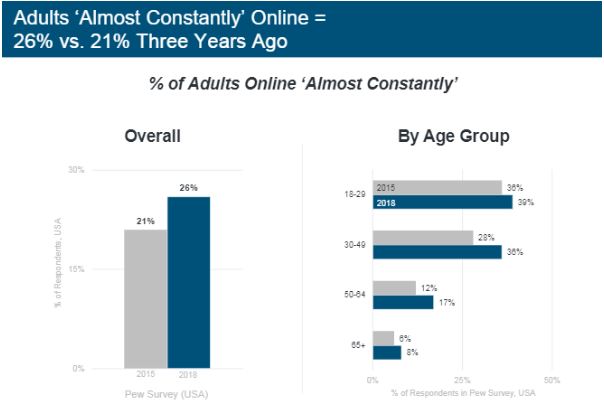
Here is the 30-minute video on highlights.
See presentation material for disclaimers.